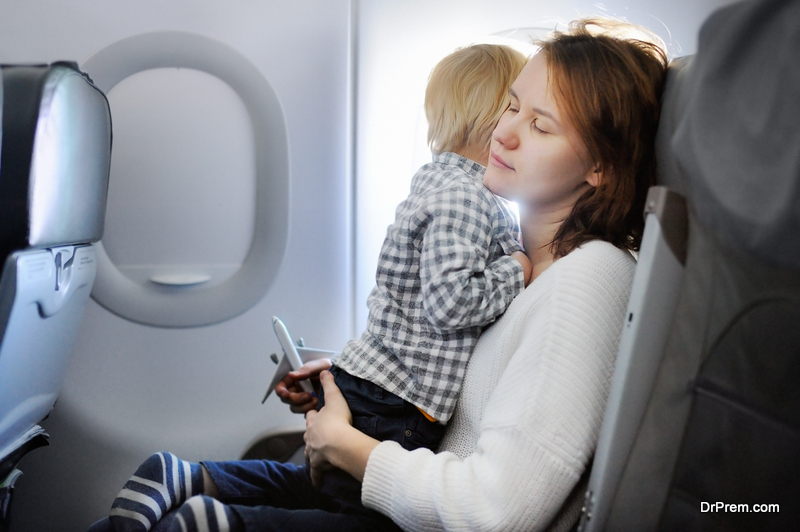Air travel has become accessible to more people in the world, as the number of airline companies has increased along with the number of aircraft. Flying has become affordable and convenient, which has led to many more people flying these days than ever before. However, the sheer number of airplanes operating every day globally has led to pollution in the skies. It’s a well-known fact that the carbon emissions from the planes do contribute to global warming and thus climate change. So, is climate-friendly air travel possible? If so, how? Let’s find out.
Climate-friendly air travel: do’s and don’ts
Did you know that going on vacation on a round trip may save you money, but the planet pays for it? Roundtrips abroad generates carbon up to 1 metric ton, which is equal to driving down 35 km or 20 miles to work in a Prius, every day of the year. If just one flight generates such a lot of pollution, you can imagine the amount of pollution so many flights cause on a daily basis. Everyone can pitch in to reduce the carbon footprint of flying.
Here are some tips which might help you do that:
Think twice before planning a trip
One of the ways to reduce atmospheric pollution due to flying is to fly as little as possible. It can delay things a bit, but if you can take the bus or train to a destination, you’d be reducing your carbon footprint of flying. In Europe especially, trains are well-organized and have great reach. Besides, think of the extra time on the bus or train as an opportunity to catch up on your reading!
On the other hand, flying is viable when you travel long distance, as driving solo will mean you’d burn more fuel and increase your carbon footprint. Keep your eye on the development of eco-friendly planes of the future, so that you may be one of the first to be on those planes, and conserve conventional jet fuel.
Do your research
Airplanes and global warming are closely related. The carbon gas emissions from the planes heat up the atmosphere leading to the warming of the skies. So using the most fuel-efficient planes are one of the best options. Go online and search for the airlines, which have the best names for being fuel-efficient. By buying tickets from eco-conscious airline companies you’d be supporting climate-friendly air travel.
You can find out in an easy manner if your airplane of choice is eco-friendly or not. If your plane has more number of premium seats than others, then it burns more fuel per person, as its fits fewer people on a single flight. The type of aircraft also matters, so check for that too. For example, the turboprop planes fly at a much lower height and use 64% of fuel than jets.
Take no-stop flights
Flying continuously will save more fuel. According to a report by NASA in 2010, 25% of emissions arising from planes come from taking off and landing. This includes taxiing, as it is the largest contributor to emissions in the entire takeoff-landing cycle. Taking non-stop flights would make climate-friendly air travel a reality. Also, flying in warm temperatures is not very efficient, as the air is thinner and it’s more difficult for airplanes to take off. So if you live in warmer climes, you should opt for more eco-friendly modes of travel.
Why the flying economy is good for the environment
Economy flights are supposedly better according to the atmospheric scientist called Peter Kalmus. In his book, ‘Being the Change’, he writes that sitting in economy emits only .5 kg of CO2 as compared to 1.5 kg of CO2 per passenger mile. Even a report by the World Bank in 2009 calculated that carbon footprint of first-class seats is 9 times more than economy ones. So next time, when you’re flying economy and trying to make yourself as comfortable as you possibly can, at least be happy that you’re contributing to climate-friendly air travel.
Choose daytime flights
Experts in the aviation industry say that daytime fights are more eco-friendly than nighttime flights. This is because the exhaust plumes, which you can see behind airplanes, called contrails can reflect sunlight/heat away from Earth. Night flights’ contrails instead trap the heat, instead of reflecting it away from the atmosphere.
Buying carbon offsets
To offset your carbon footprint, you can avail of some offers that certain airlines offer, such as paying more to support eco-friendly ventures. Such as, supporting the building of renewable energy projects or planting trees. Though you have to check that the projects you’re paying for are genuine and verified by neutral third party organizations.
On the other hand, instead of relying on someone else to plant a tree for you, you can do it yourself. Plant trees, participate in river cleanups, fly less, conserve fuel, eat local and support green community initiatives to offset your carbon footprint from flying.
Pack light
All passengers should pack light. A lighter plane is faster and requires less fuel. So when you’re packing just pack just the absolute essentials and forego the ‘maybe’s.
Packing light is one of the easiest things you can do for climate-friendly air travel. It doesn’t cost any money but speaks volumes about your commitment to green travel.
Close the window shades
Do you wonder why you’re supposed to lower the window shades when you fly? It’s because when you land, the amount of fuel used to cool the plane is much less. This helps to conserve fuel and adds to the profit of airlines.
Small gestures on our part can make climate-friendly air travel feasible. Packing light, closing shades, flying less and flying in the daytime are some of the things we can all do to aid eco-friendly flying. Another option is virtual vacations (using VR tech), staycations etc instead of real vacations, as you never have to move out of your home to enjoy a nice, relaxing holiday.









